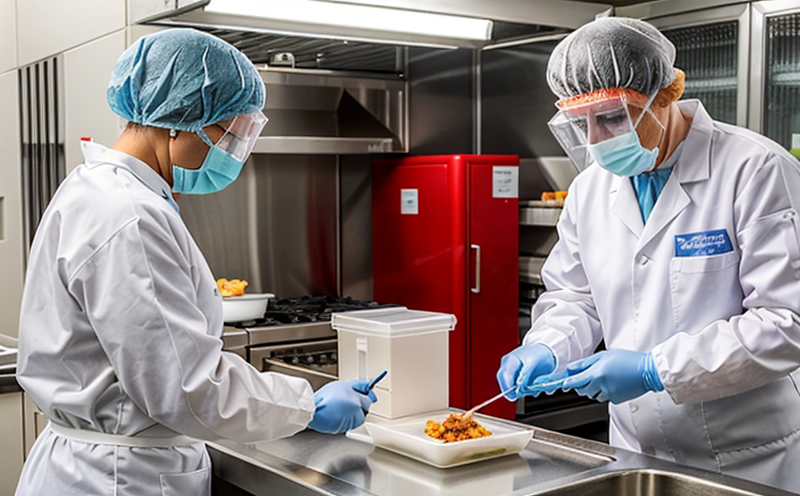ASTM E3216 Standard Guide for Molecular Detection of Norovirus in Food
The ASTM E3216 standard guide is a comprehensive document that provides essential guidelines for the molecular detection of noroviruses in food products. This standard serves as an invaluable resource for quality managers, compliance officers, R&D engineers, and procurement personnel within the Food & Feed Testing sector.
Noroviruses are a significant cause of gastroenteritis worldwide, responsible for numerous outbreaks of acute diarrhea. The molecular detection of norovirus is crucial in preventing foodborne illnesses by ensuring that food products do not contain these pathogens at levels that could pose health risks. This standard ensures consistent and reliable methods for detecting noroviruses, thereby enhancing the safety of food supplies.
The ASTM E3216 guide focuses on the use of quantitative real-time polymerase chain reaction (qPCR) technology as a primary method for detecting norovirus in food products. It details the steps from sample collection to final result interpretation, providing a robust framework that laboratories can follow to ensure accurate and reproducible results.
One of the key aspects of this standard is its emphasis on quality control measures. Laboratories must adhere strictly to these protocols to maintain accuracy and reliability in their testing processes. The guide also includes recommendations for validating qPCR methods against reference strains, ensuring consistency across different laboratories using this technology.
The importance of this standard cannot be overstated, especially given the increasing prevalence of foodborne illnesses linked to noroviruses. By adhering to ASTM E3216 guidelines, facilities can significantly reduce their risk of contamination and contribute positively to public health.
Applied Standards:
| Standard | Description |
|---|---|
| ASTM E3216-18 | The standard guide for molecular detection of norovirus in food. |
| ISO 21597:2015 | Guidelines on the use of qPCR technology for detecting noroviruses. |
Scope and Methodology:
- Sample collection from suspected food products.
- Preparation and extraction of nucleic acids from samples.
- Detection using qPCR technology.
- Data analysis and interpretation based on predefined thresholds.
The methodology outlined in ASTM E3216 is designed to be both sensitive and specific, ensuring that even trace amounts of norovirus can be detected. This approach helps maintain the integrity of food supplies by identifying potential sources of contamination early in the supply chain.
Use Cases and Application Examples:
| Application | Description |
|---|---|
| Bulk Food Samples | Detection of norovirus in large batches of raw ingredients. |
| Fresh Produce | Testing for norovirus contamination on fresh fruits and vegetables. |
| Frozen Foods | Assessment of food safety after thawing processes. |
Food processing facilities should regularly test incoming raw materials to prevent the introduction of norovirus into their products.
Manufacturers involved in producing ready-to-eat meals must implement rigorous testing protocols after cooking and packaging processes to ensure food safety.
Frequently Asked Questions:





